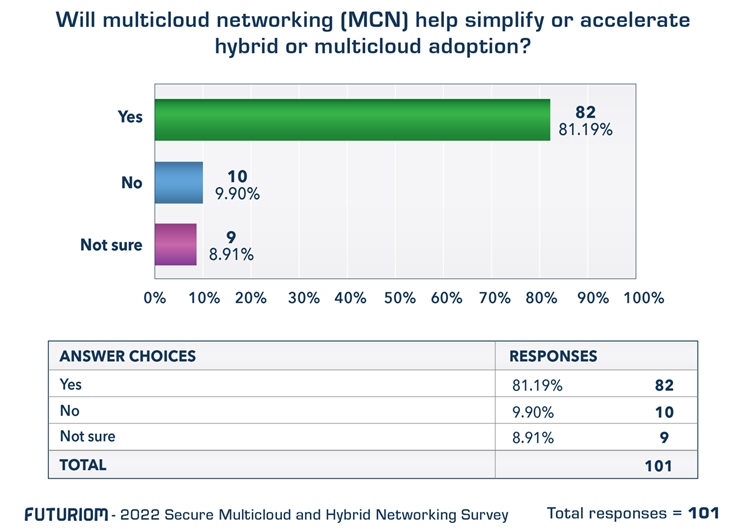Lumen Technologies in the last year has doubled down on enterprise, launching its first network-as-a-service offering, the ExaSwitch interconnection platform, among other services.
Miriana Martinova, Lumen’s SVP of Core Network Solutions, told Fierce the company sees itself as a digital network services provider, which means it’s helping enterprises achieve their “digital transformation plans.”
It’s doing so by providing enterprises with technology they can use to support automation, artificial intelligence, the ability to connect to the cloud and other applications.
“Although businesses are still trying to figure out how they play with AI [and] how do they participate in that revolution, the demand for high bandwidth, high capacity, low latency applications is there,” Martinova said. “And that’s really kind of at the core where Lumen is really very strong.”
ExaSwitch, a platform Lumen launched last June in partnership with Google and Microsoft, allows users to connect their edge sites, data centers and central offices to the service in 400G increments.
Martinova said the ExaSwitch platform “fits nicely” with the needs of a large enterprise customer that’s “pushing massive workloads to the cloud.” Notably, businesses can transmit data from a private data center and “directly connect to their hyperscale of choice” without third-party intervention.
“The other exciting use case within ExaSwitch that we’re pursuing is the ability for an enterprise to exchange those workloads or push them from one location within their ecosystem to another within a matter of minutes,” she explained.
Lumen’s NaaS offering, Internet-on-Demand, lets enterprises connect to the Lumen network from a port-enabled business location or a public data center. Once plugged in, customers can use the NaaS at speeds starting at 100 Mbps all the way up to 10 Gbps.
Products like Internet-on-Demand gives customers “the opportunity to open up new revenue pools for themselves,” Martinova noted. These offerings also let Lumen solve “unique customer problems” across various industries.
“The customer centricity and experimentation are new muscles for Lumen,” she said. “We’ve been not just excited about the opportunity to try something new but we have been incredibly rewarded for taking that customer first approach in our conversations.”
Scott Raynovich, founder and chief analyst at Futuriom, told Fierce NaaS is becoming a key component of multicloud networking (MCN), as enterprises look to connect a variety of networks together, such as connecting enterprises and cloud networks.
“Lumen and other service providers are wise to launch services that help enterprises do this,” he said. “This will be especially important as enterprises adopt more hybrid and multicloud approaches to their infrastructure.”

Raynovich in a recent column also pointed out telecom companies are becoming more interested in adopting AI to help solve the problems of automating and improving services, as well as to enhance the customer experience.
Public sector gains
During fourth quarter earnings, Lumen touted public sector revenue growth in its enterprise portfolio. CEO Kate Johnson noted the company’s public sector segment grew by double digits year on year.
Asked why public sector customers are leaning toward Lumen’s enterprise services, Martinova explained entities such as state governments and educational institutions “are looking for new opportunities to redesign their connectivity.”
“The Covid era completely reshaped how we think about our networks and work on activities and where it should be…we’re starting to see those trends also translate into the public sector,” she said.
Lumen is seeing “tremendous activity” from State, Local and Education (SLED) entities, which are basically government sectors that aren’t federal.
But the company also has a steady flow of federal government customers. Last November, it scored a $110 million contract with the U.S. Defense Information Systems Agency (DISA). In past years Lumen has also secured contracts with agencies like the U.S. Department of Agriculture and the Department of the Interior.
Martinova added Lumen is trying to “create new digital experiences” for customers who are then able to manage it as they see fit.
“The ability to secure those connections through our security services and then be able to get the customer to where they want to be, where they want to manage that data, be that on the [premises], on the cloud, a hybrid cloud environment, on the edge,” she explained. “We have the ability to do that because we have the breadth of services that we offer.”
Enterprises hunger for high bandwidth
One demand that’s consistent across the enterprise industry is the demand for high bandwidth, said Martinova.
At the end of 2022, Lumen was “the first to market in enabling 400 gigabit connectivity” on its wavelengths network. It completed enough 400G upgrades to launch inter-city wavelength services covering 70 markets.
Demand for 400G wavelength services “really started” to pick up in the last six months of 2023, Martinova said. Lumen in Q1 2023 also deployed 400G connectivity for high-speed IP services.
“This was a really important milestone for us, to have not just our layer one networking connectivity but also offer that at layer three,” she said.
Martinova also pointed out Lumen in 2022 upgraded its Ethernet platform from 10G to 100G. She told Fierce last year Lumen is offering 100G Ethernet in 42 markets.
“We continue to expand the number of markets where that is available,” she said.